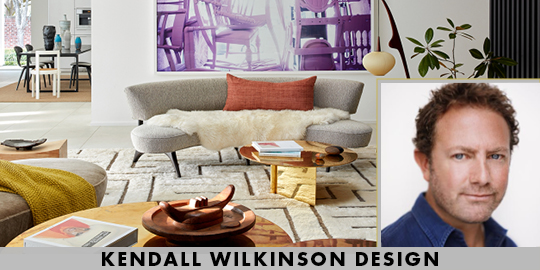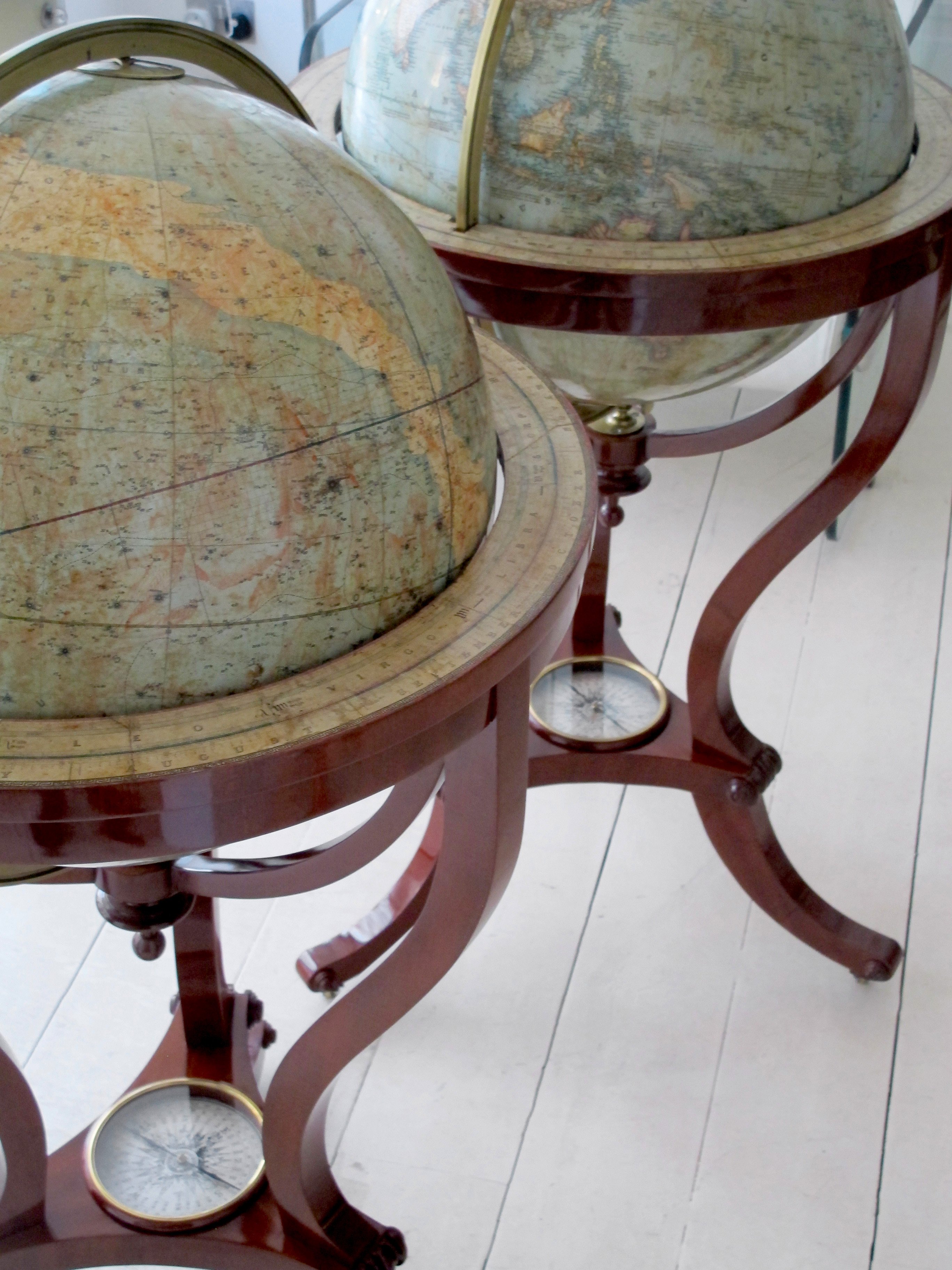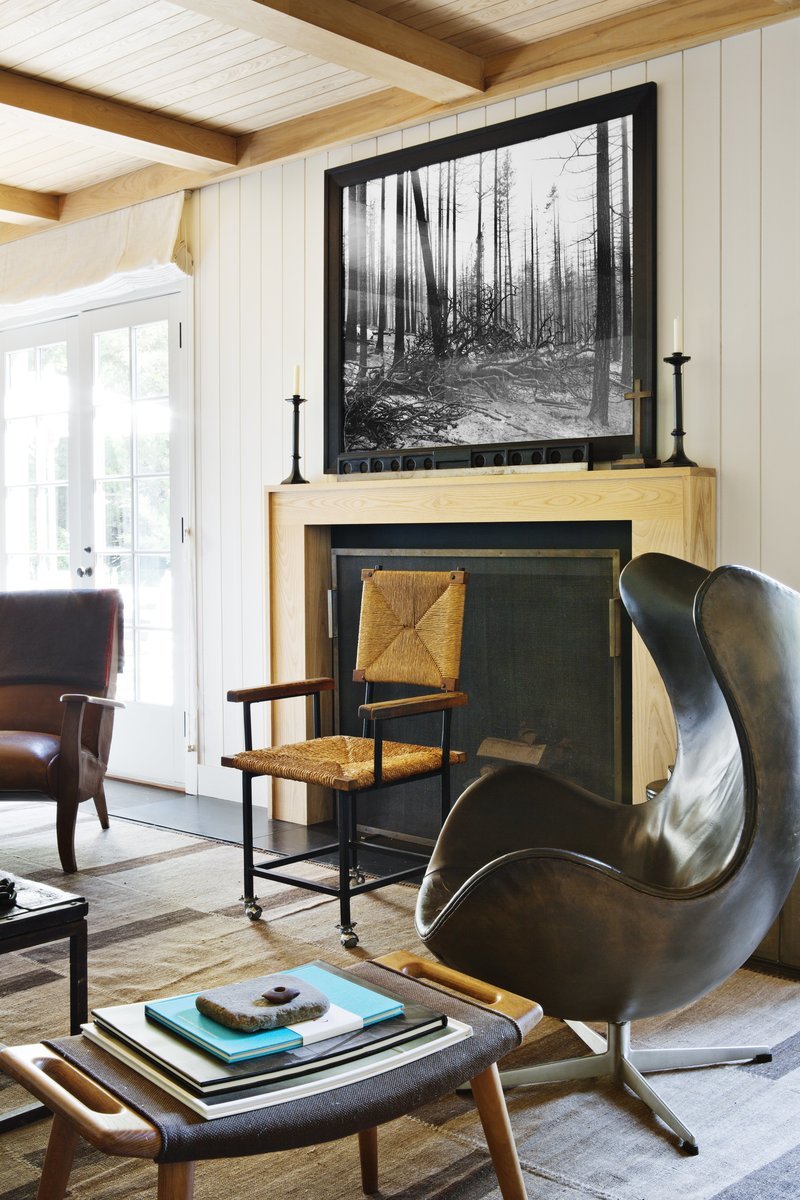Dealers & Designers: Portuondo & Robert Stilin
 |
| In a 1920s Tudor house in Louisville, Kentucky, Robert Stilin answered the client’s craving for bold color with tangerine and turquoise silk velvet fabrics married with a Rita Ackermann painting. Tufted sofa by Todd Merrill Originals, vintage Federico Munari lounge chairs, vintage 1970s bronze coffee table at front. Photo by Stephen Kent Johnson, Robert Stilin Interiors, Vendome Press 2019. |
Welcome to a new installment in our series Dealers & Designers: In the Know from The Gallery at 200 Lex powered by Incollect. Throughout the series we bring together experts from both sides of the trade to give you the inside scoop. We’ll hear from dealers who offer exceptional vintage and antique furnishings, and the designers who utilize those pieces in their designs; each will provide their insights and share their expertise.
In this segment, we spoke with Hugo and Diego Portuondo of Portuondo Gallery, and interior designer Robert Stilin, who also happens to be a Gallery at 200 Lex dealer. They share the stories of their backgrounds and how family tradition shaped their destinies, the varied paths they took to get where they are today, their unique perspectives, and how it all ties together to shape their aesthetic. They speak passionately about antiques, vintage furnishings and art, all three of these experts place great importance on buying and living with what you love.
 |
How did you decide to become dealers? We are second generation antique dealers, however, unlike our father who deals in 18th century furniture, we decided to focus on 20th century art and design. As second generation antique dealers, how did you find yourselves following in your father’s footsteps? Both my brother and I never thought that we would become antique dealers; my brother studied photography at Central St Martins in London and worked as an art photographer. I read art history and philosophy at The American University in Paris, where after graduating I worked for an old master paintings expert for the French auctions. I then went on to sell works of modern art as a private art dealer. Antiques and 20th-century design have always been a passion for both of us since we were very young kids and our father would take us on buying trips all over Europe. We were very lucky to witness firsthand the pursuit of an object, from spotting it, to verifying its authenticity, to the actual negotiation of the purchase. Nine years ago, we decided that we wanted to become business associates and follow in our father’s footsteps, becoming dealers mainly in 20th-century design. Do you tend to choose things for your inventory that need restoration, or things that are in ready-to-sell condition? In a perfect world, we would prefer to buy pieces that do not need restoration and have their original patina, such as the Ico Parisi console currently on show at The Gallery in 200 Lex. However, we purchase items in all conditions. There is a certain magic when you see the result of a piece that has been restored. When choosing items for your inventory, what makes it a “Portuondo piece”? Our ethos is to always buy pieces we would live with in our own homes. Of course, there are certain criteria to purchase them such as quality, proportion, and rarity.
Can you tell us about a time when you had a piece restored that turned it from something no one would look at twice, to a masterpiece? We bought a pair of antique celestial and terrestrial library globes by Thomas Malby which we thought were in terrible condition. Notably, the globes were so dirty that you could not even see the outline of the maps nor the blue color, let alone the constellations. However, after a six-month restoration by a specialist the results were fantastic; the globes found their former glory.
What are some of the pieces that you have a hard time letting go of? We sold a collection of Calder tapestries which were exceptional, and it was tough to part ways. The Calder tapestries were a fantastic ensemble, to see them all together gives any room a wonderful ambience. The vivid colors, the geometry of the designs, the impeccable skill in the Aubusson manufacture as well as the almost perfect condition of the tapestries made them very special.
You have done many shows and exhibitions throughout the world, which show is the most memorable and why? For each show we participate in, there is a lot of preparation involved as we usually start buying pieces for the show up to a year in advance. Each item is carefully placed in our booths and part of a curated plan. One of our best booths was at PAD London in 2019; we were very happy with the result. The pieces we exhibited were very strong and we had great commercial success.
What was your most memorable project or partnership with a designer? It is very hard for us to name one partnership or project as we have been working with designers such as Robert Stilin, Haynes & Roberts, Tony Ingrao, David Kleinberg for quite a number of years. It is an absolute pleasure to work with them every time. What do you admire most about Robert Stilin’s work and why? We very much admire his ability to fuse mid-century design, antiques, contemporary art, and design to create elegant and eclectic living spaces. |
What made you decide to become an interior designer? It’s a funny story because it happened accidentally. I was raised in an entrepreneurial family and originally planned to go into private equity, but ended up working in the high-end fashion business. Once I moved to Florida, I tried to get into banking and finance. But, as a result of doing my own home, I fell into the interior design and home industry. In Palm Beach at that time, if you were trying to walk into an antique store, it was open only by appointment and/or you needed a business card and tax ID. It was also difficult to walk into a Design Center without either of those credentials. I sensed an opportunity and came to a decision to create an upscale lifestyle store, opening my first store in Palm Beach. That store became a launchpad for me. As people came into the store and shopped, they liked my taste and I began working on projects for clients.
What draws you to an antique or vintage design piece? I like age, patina, shape, and form. I am a believer of function over form. It must be functional, unless for some reason the piece was not meant to be functional originally. Things that have age add instant patina and atmosphere to an interior. Using antique furniture and antiques gives a sense of warmth and depth that gives character to spaces. Filling a room with brand new pieces can look cold and flat. How do you find the balance between incorporating vintage and antiques into your designs? I believe very much in comfort. When we do a project, we try to add in unique pieces to create balance and contrast in a room. We want to have a mix of low-slung and leggy forms for good scale and contrast.
Have you seen a rise in interest in antiques and vintage pieces? The market has exploded and expanded worldwide. I would go back to the late 80s/early 90 and attribute it to Martha Stewart. She put design on the map and opened the world’s eyes to see value in design and collecting and antiquing. You are both a designer and a dealer — how do you balance both? The two flow very easily. The dealer role is a small part of my business from a day-to-day perspective. Then there is the retail/merchant part – I like to create vignettes and displays. Our storefronts enable us to showcase our work to clients, which is very helpful.
What is one of the biggest misconceptions clients have regarding working with antiques and vintage furniture? They sometimes express reservations about the idea that antiques and vintage are ”used furniture” and they do not come with a warranty. Or that these pieces are high maintenance and you must maintain these pieces. But then I remind them that there is a cost to fine living, and it's about your quality of life in your home, so you must ask yourself, how do I want to live in it? Tell us about a time when a piece did not work out or did not measure up to expectation and what did you learn from the experience? Sometimes, especially when working on a project for a few years, I’ll buy one thing and will end up using it for something else. For example, buying a table for a breakfast table and then using it in the main entrance. Overall, each piece chosen must have quality and functionality. It is important to love every piece you buy and be comfortable mixing them together and being open to creating a new dance from the original one planned. There are exhibitions and antique shows all over the world — which is your most memorable/favorite show to attend and why? I like going to the Salon Fair in NYC, PAD in London, Design Miami, The Winter Show and TEFAF. I like going to any kind of low-key sale, i.e. Brimfield and any small sale in Europe. I love shopping Pimlico Road in London, the brick-and-mortar shops, and the flea market in Paris. I have my go-to strategy; I go Thursday through Saturday. I will go on Thursday and then back again over the weekend because I love the culture and the whole process of it. I like going to a mix of exhibitions, shows and shops because I am making lifestyles for today and reinventing something from the past and using it for today. If you had a fantasy room to furnish with pieces from Portuondo, what room would that be? An apartment in Paris furnished with a wide-ranging variety of pieces. Portuondo has an eclectic mix of 20th-century design, many with Italian, Spanish and French influences. You can also occasionally find pieces from the 19th century as well. They have a great mix of items that I would want to have in a Paris apartment for myself; I envision a different look than my typical look. I find so many great pieces at Portuondo; our taste in things we like is very “simpatico.” I like that they have a nice variety and it’s all complementary, their pieces are interesting and thought-provoking. |
 |




































